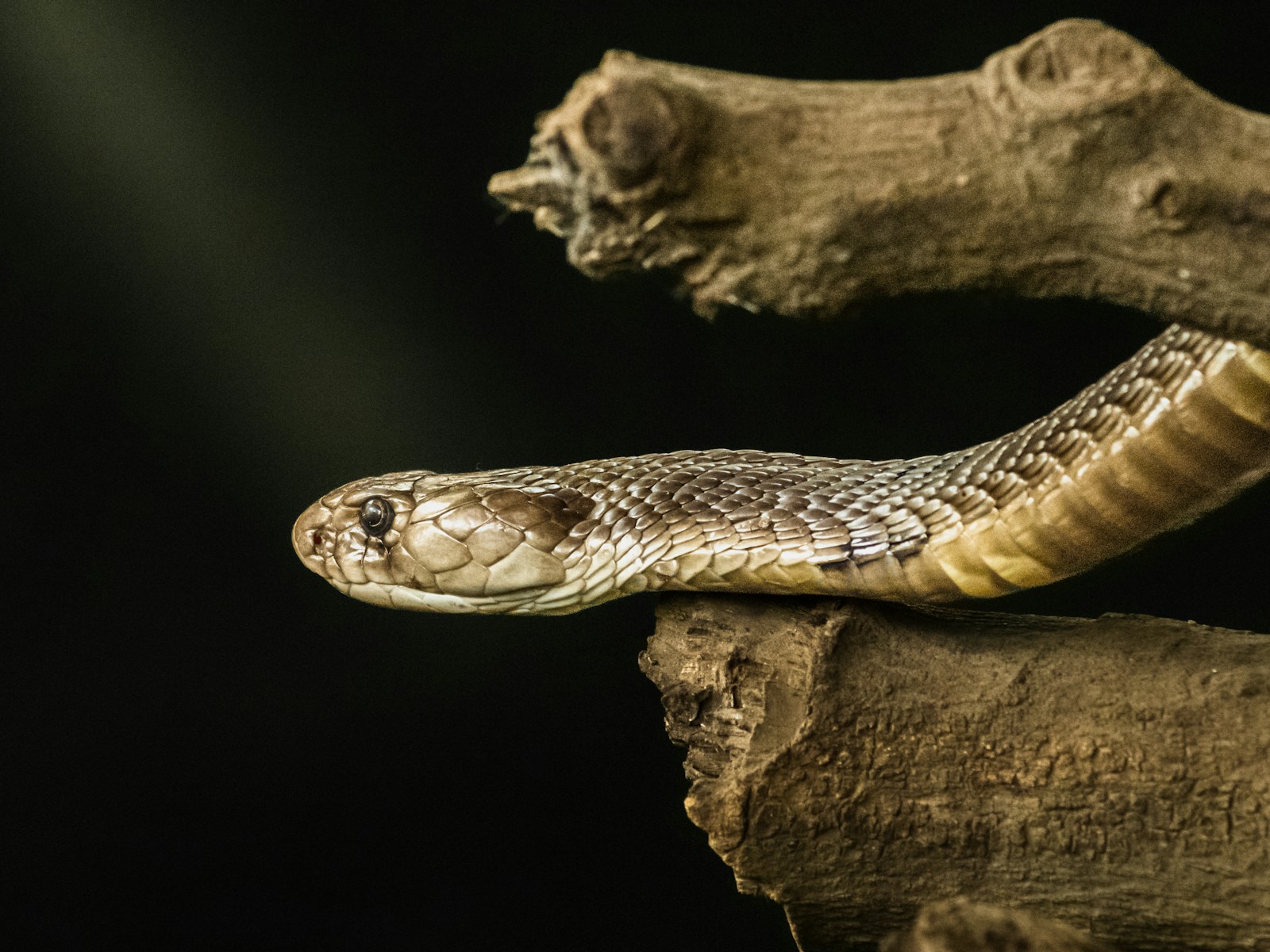The animal kingdom is full of remarkable adaptations that have evolved over millions of years, but few are as visually striking and effective as the camouflage abilities of certain snake species. Among these masters of disguise, the ability to mimic a pile of rocks stands out as particularly fascinating. This extraordinary adaptation allows these serpents to become virtually invisible in their natural habitats, blending seamlessly with their surroundings. The remarkable similarity between these snakes and ordinary rock formations isn’t merely coincidental—it’s the result of evolutionary processes refining their appearance for optimal survival. In this article, we’ll explore the incredible world of rock-mimicking snakes, examining their unique adaptations, evolutionary history, and the challenges they face in today’s changing world.
The Masters of Rock Disguise – Gaboon Vipers
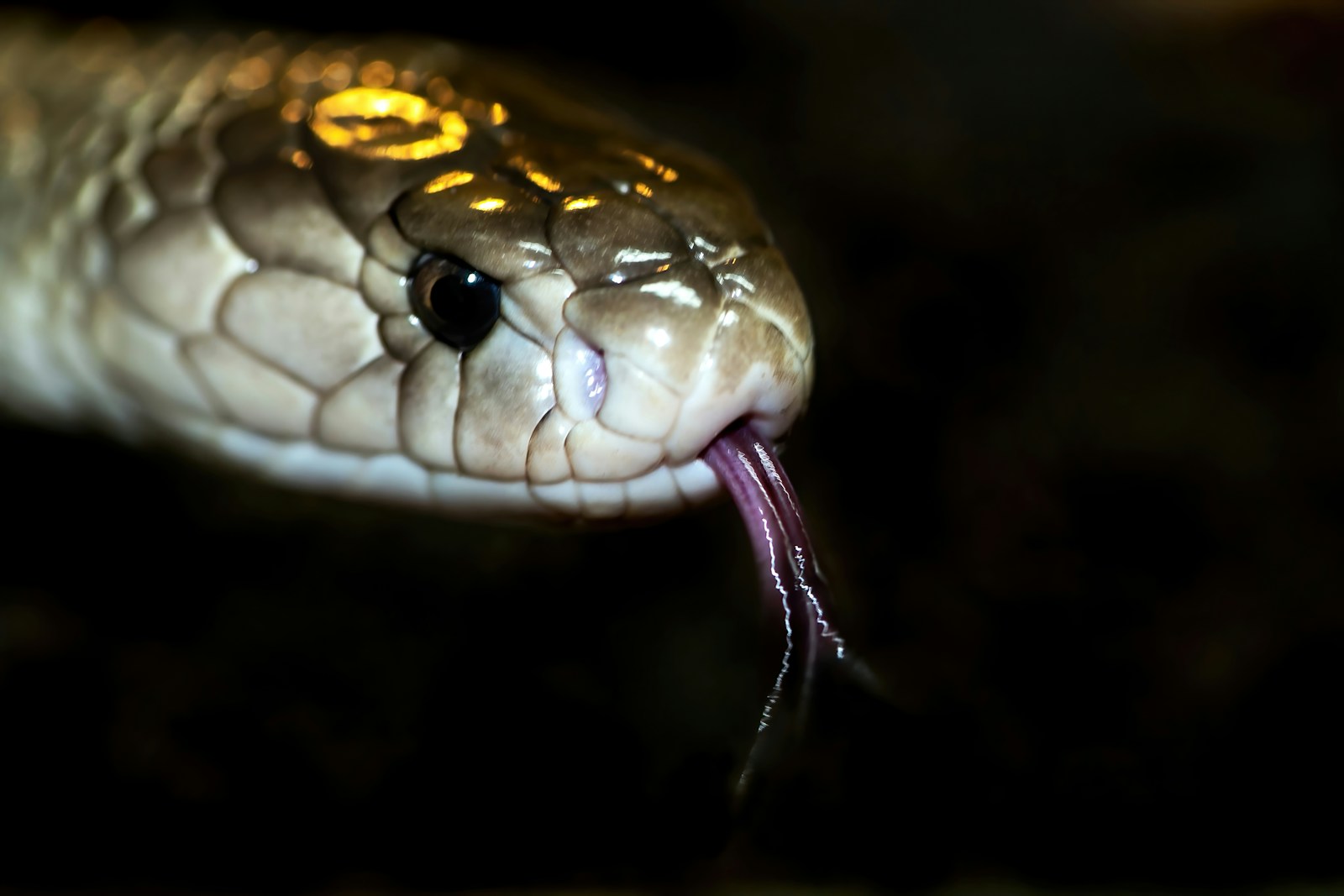
At the forefront of rock-mimicking snakes stands the magnificent Gaboon viper (Bitis gabonica), native to the forests and woodlands of sub-Saharan Africa. With its exceptionally broad, triangular head and incredibly intricate pattern of geometric shapes, the Gaboon viper creates a perfect illusion of a pile of rocks or stones when coiled. Their skin features an elaborate mosaic of rectangles, squares, and triangles in various shades of brown, tan, and pink that precisely mimics the appearance of scattered rocks on forest floors. When this snake remains motionless, which it often does for days while waiting for prey, even experienced herpetologists have been known to walk right past them without detection—a testament to the perfection of their camouflage adaptation.
The Deadly Death Adder’s Stone-Like Concealment
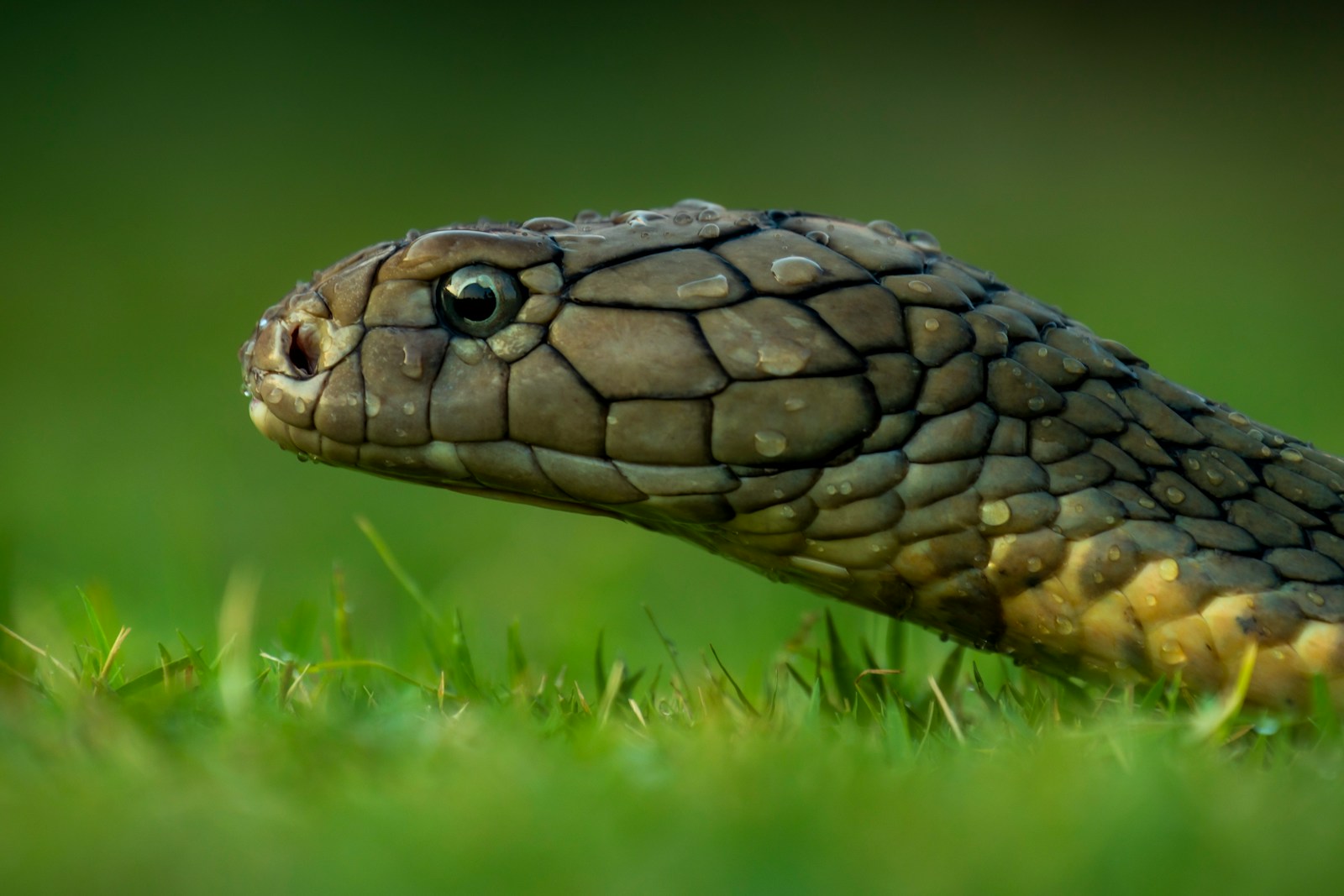
Australia’s common death adder (Acanthophis antarcticus) has mastered the art of rock camouflage in a different ecosystem altogether. This highly venomous snake possesses a stout body with rough, keeled scales that create a textured appearance remarkably similar to the rocky outcrops of its habitat. With coloration ranging from reddish-brown to gray and black, death adders can perfectly match the geological features of their surroundings. What makes their disguise even more effective is their hunting strategy—they bury most of their body in leaf litter or sand with just their tail and head exposed, creating the impression of nothing more than a small cluster of rocks. Their patience is legendary, as they can remain in this position for weeks, waiting for unsuspecting prey to wander within striking distance.
The Rhinoceros Viper’s Stony Silhouette
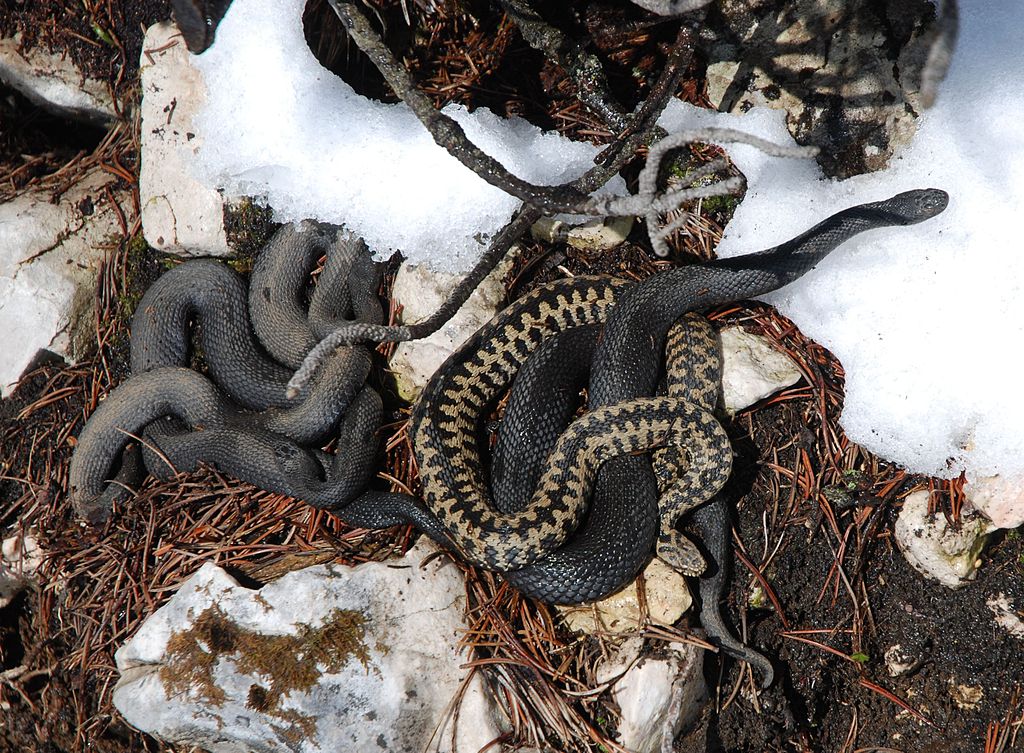
The rhinoceros viper (Bitis nasicornis) of Central and West Africa presents another remarkable example of rock-mimicking camouflage. This snake features a series of blue-black, geometric rhomboid patterns set against vibrant background colors that, despite seeming flashy up close, break up the snake’s outline perfectly in its natural habitat. The rough, highly keeled scales of this viper create a three-dimensional texture that enhances the rock-like appearance when the snake is coiled. Most fascinating are the distinctive horn-like scales protruding from its snout, which not only give the snake its name but also contribute to the irregular outline that helps disguise it as a jagged rock formation. When nestled among actual rocks or forest debris, the rhinoceros viper becomes virtually indistinguishable from its surroundings.
Evolutionary Development of Rock Camouflage
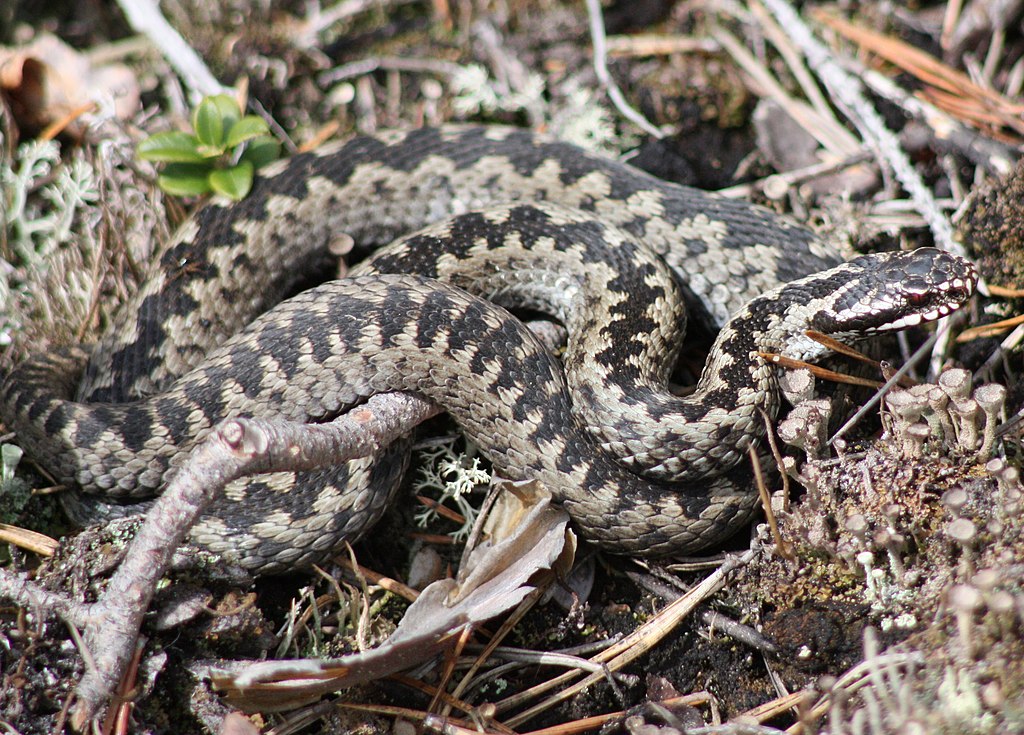
The evolution of rock-mimicking camouflage in snakes represents a fascinating case of convergent evolution, where similar traits develop independently in unrelated species facing similar environmental challenges. This adaptation didn’t appear overnight but developed gradually over millions of years through natural selection, with snakes that better matched their surroundings having higher survival rates and reproductive success. Scientists believe that initially subtle variations in scale texture and coloration provided minor advantages, which over countless generations were refined into the remarkable mimicry we observe today. The process was likely accelerated by the dual advantage this camouflage provides—protection from predators and concealment from prey, creating strong selection pressure for the trait to develop and persist.
The Science Behind the Disguise
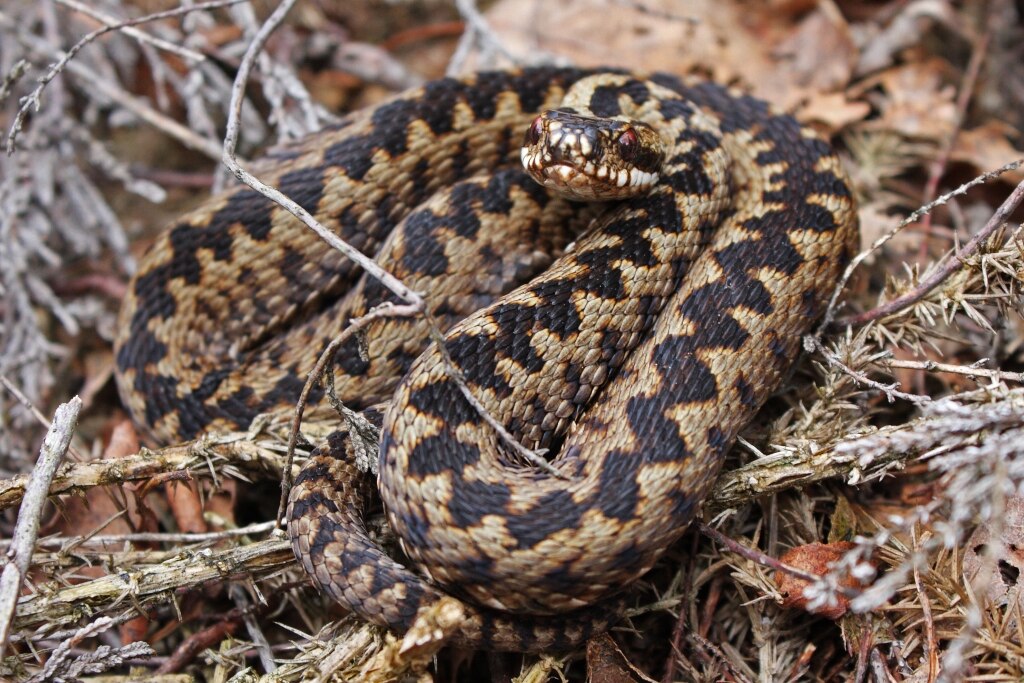
The effectiveness of rock-mimicking camouflage relies on several scientific principles working in concert. First is disruptive coloration—patterns that break up the snake’s outline and make its body shape less recognizable to both predators and prey. Second is background matching, where the snake’s colors and textures closely resemble the predominant features of its environment. Third is counter-shading, where many of these snakes are darker on top and lighter underneath to counteract the effects of sunlight and shadow that would normally make their cylindrical bodies stand out. Perhaps most fascinating is the role of scale morphology—the microscopic structure and arrangement of scales creates light-scattering properties that mimic the mineral textures of actual rocks, making the disguise effective even under close inspection.
The Mountain Adder’s Rocky Refuge
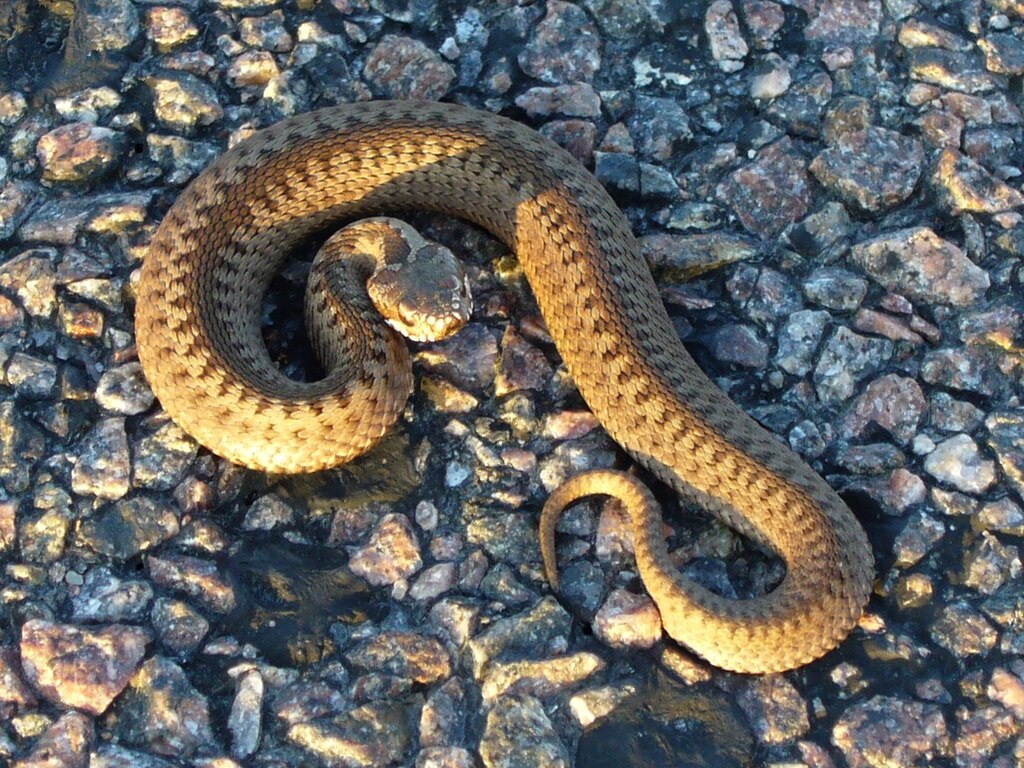
South Africa’s mountain adder (Bitis atropos) has perfected rock camouflage for high-altitude environments. This small viper inhabits mountainous regions with abundant rock scree and has evolved a distinctively mottled pattern that precisely matches the lichen-covered rocks of its native habitat. The small size of the mountain adder—rarely exceeding 40 centimeters in length—allows it to mimic not just a pile of rocks but often a single, angular stone when coiled. These snakes have adapted behaviorally to enhance their disguise, often positioning themselves in crevices between actual rocks so that their bodies appear to be simply another part of the rock formation. Their keen ability to remain motionless, sometimes for days at a time, completes the illusion and makes them nearly impossible to detect in their natural habitat.
The Saw-Scaled Viper’s Gritty Disguise
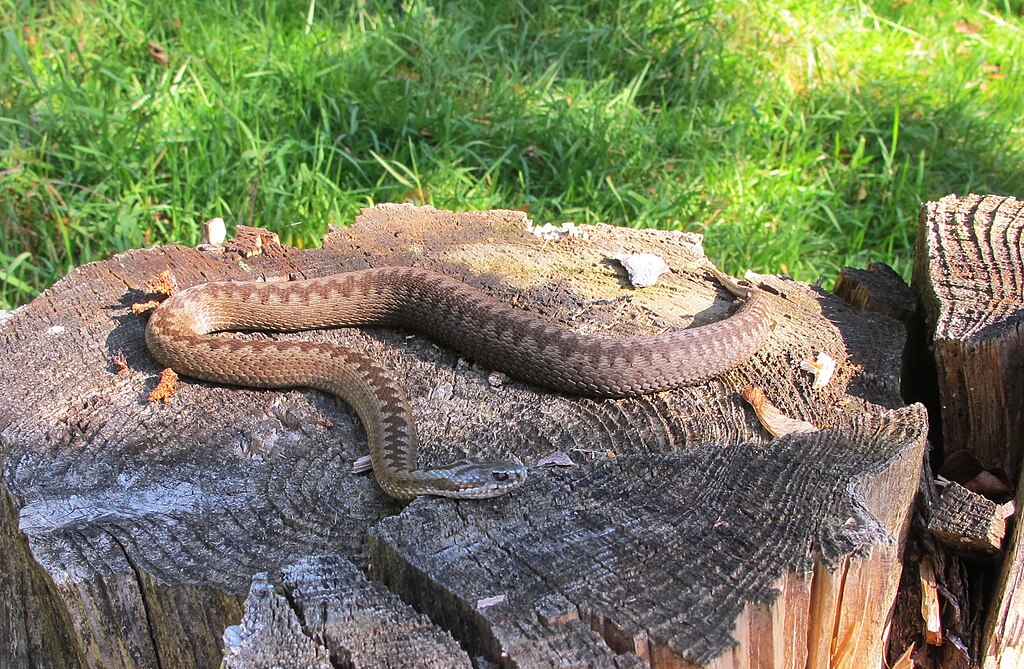
The saw-scaled viper (Echis carinatus) of arid regions across Africa, the Middle East, and the Indian subcontinent demonstrates rock camouflage perfectly adapted to desert and semi-desert environments. Their body coloration varies widely based on locality, precisely matching the predominant rock color of their specific habitat—from pale sandy hues to reddish-brown or gray. The most distinctive feature contributing to their rock-like appearance is their heavily keeled scales that create a rough texture identical to the weathered surfaces of desert rocks. When threatened, these vipers create an additional form of mimicry by rubbing their serrated scales together to produce a distinctive rasping sound similar to wind blowing through rock crevices or sand moving across stone surfaces—an acoustic component that complements their visual disguise.
Predator Avoidance Through Stone Mimicry

Rock camouflage serves as a primary defense mechanism against the numerous predators that hunt snakes in their natural habitats. Eagles, hawks, and other raptors with exceptional vision would readily spot and consume snakes without this protective disguise, making airborne attacks a significant threat that rock camouflage helps mitigate. Mammalian predators like mongooses and honey badgers, known for their snake-hunting abilities, rely heavily on movement and scent to locate prey, so a motionless, rock-like snake often escapes detection even at close range. Some snake species have developed this camouflage to such perfection that they can remain undetected even by specialized snake predators like secretary birds or snake eagles, which have evolved specifically to hunt serpents. The effectiveness of this disguise demonstrates the intense predatory pressure that has shaped these remarkable adaptations over evolutionary time.
Hunting Advantages of Rock Disguise
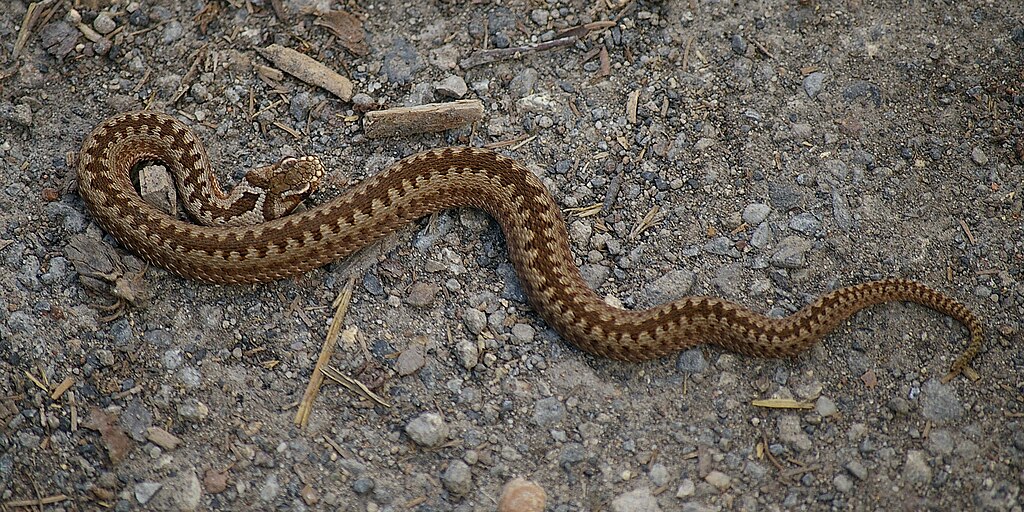
Beyond protection from predators, rock camouflage provides snakes with a significant hunting advantage through the strategy of ambush predation. By resembling inanimate rocks, these snakes create a false sense of security for their prey, which may even use what they perceive as rocks for shelter or navigational landmarks. Small mammals, birds, and lizards that would normally detect and avoid snake shapes will approach without caution, often coming within striking distance of these hidden predators. The success rate of ambush hunting is dramatically improved by this disguise—studies of some rock-mimicking vipers show strike success rates approaching 80%, compared to around 30% for species without specialized camouflage. For venomous species in particular, this strategy conserves energy and reduces risk, as they need not pursue prey actively but can wait for opportunities to present themselves.
The Bush Viper’s Stony Silhouette
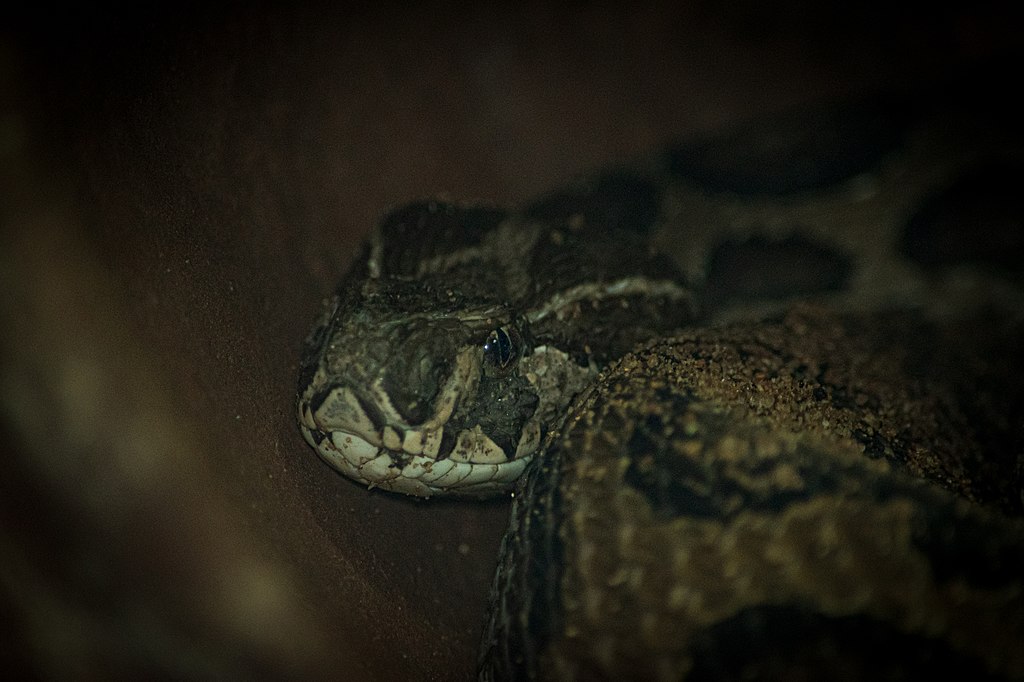
Several species of bush vipers (genus Atheris) from the rainforests of Central and West Africa have developed rock camouflage suited specifically for their arboreal lifestyle. Their heavily keeled scales create a rough texture that, when the snake is coiled on a tree branch, resembles a cluster of small stones or a lichen-covered rock formation in the dappled light of the forest canopy. The variable coloration of bush vipers—ranging from vibrant greens to earthy browns and grays—allows them to match different rock types and moss-covered surfaces found in their forest habitats. What’s particularly remarkable about these arboreal specialists is how they’ve adapted the rock-mimicking strategy to an above-ground environment, demonstrating the versatility and effectiveness of this form of camouflage across different ecological niches.
Habitat-Specific Adaptations
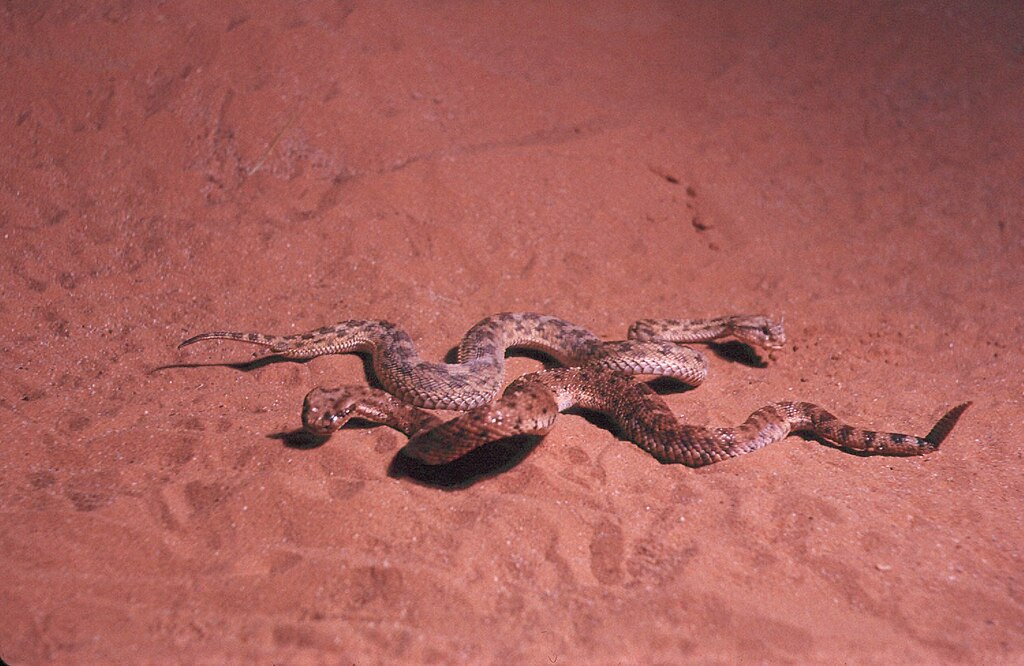
The effectiveness of rock camouflage varies substantially depending on the specific habitat, and snake species have evolved localized adaptations to match their particular environments. Desert-dwelling rock mimics like certain populations of sidewinder rattlesnakes (Crotalus cerastes) display pale, sandy coloration with subtle patterns that match the mineral composition of desert rocks and gravel. By contrast, forest-dwelling species like the Gaboon viper showcase more complex patterns with varied colors that blend with the mosaic of rocks, leaves, and dappled light on forest floors. Mountain-dwelling species often display grayish or slate-colored scales with white or black mottling that perfectly matches the lichen-covered rocks of alpine environments. Some species even change color seasonally or as they age, ensuring their camouflage remains effective as environmental conditions shift around them.
Conservation Challenges
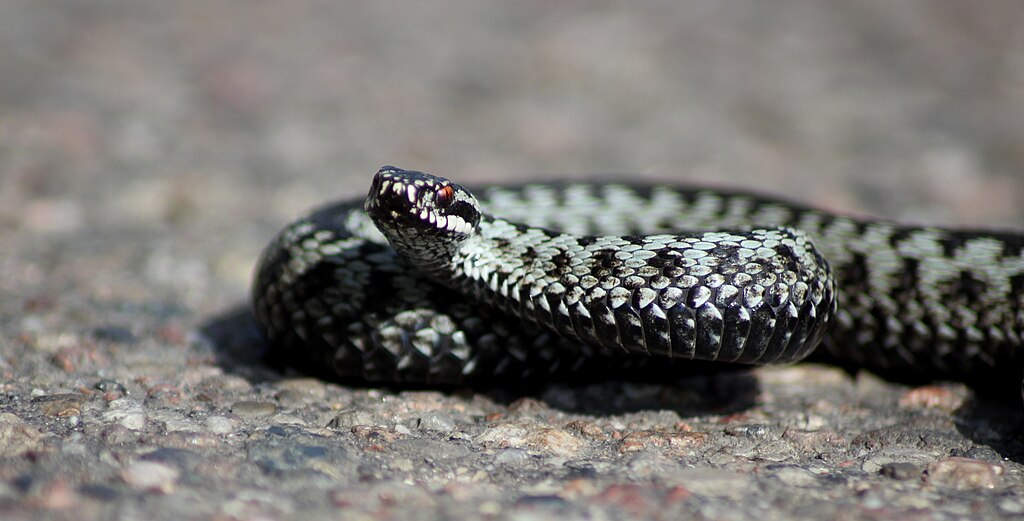
Despite their remarkable adaptations, rock-mimicking snakes face significant conservation challenges in the modern world. Habitat destruction through deforestation, mining, and agricultural expansion removes the very environments these specialized creatures have evolved to blend into perfectly. Climate change threatens to alter the appearance of landscapes faster than evolutionary processes can adjust camouflage patterns, potentially rendering once-perfect disguises ineffective. The specialized nature of their camouflage makes these species particularly vulnerable to habitat changes—a snake perfectly adapted to blend with a specific type of rock formation cannot quickly adapt if that formation is altered or destroyed. Additionally, many rock-mimicking species are venomous and face persecution from humans who kill them out of fear, despite the essential ecological roles these snakes play in controlling rodent populations and maintaining ecosystem balance.
The Future of Rock-Mimicking Snakes
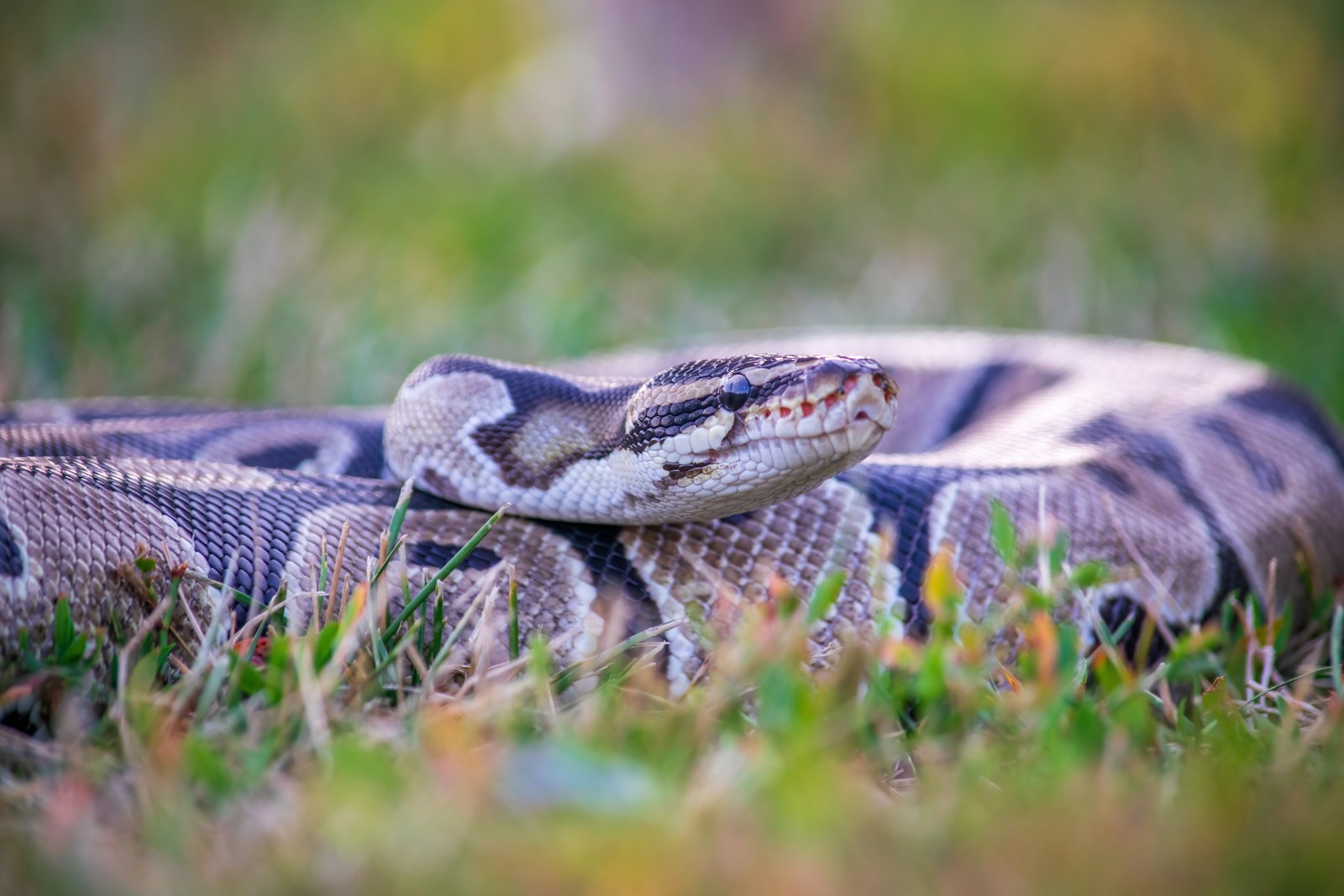
The future of these remarkable rock-disguised serpents depends largely on conservation efforts and human understanding of their ecological importance. Protected areas that preserve intact habitats with natural rock formations and substrate composition will be essential for maintaining viable populations of these specialized reptiles. Research into the genetic basis of their remarkable camouflage patterns may provide insights into adaptation mechanisms that could help predict how these species might respond to changing environments. Public education about the ecological value of these snakes, along with their remarkable adaptations, can help reduce intentional killing and promote conservation awareness. With proper protection and habitat management, these masters of disguise can continue their evolutionary journey, perhaps developing even more perfect rock mimicry as they adapt to the challenges of a changing world.
In conclusion, rock-mimicking snakes represent one of nature’s most spectacular achievements in the realm of camouflage and adaptation. From the intricate geometric patterns of the Gaboon viper to the rough, textured scales of the death adder, these serpents have evolved remarkable solutions to the challenges of survival in diverse environments. Their ability to become virtually indistinguishable from piles of rocks not only protects them from predators but also makes them devastatingly effective hunters. As we continue to study these fascinating creatures, we gain valuable insights into evolutionary processes, ecological relationships, and the incredible adaptability of life on Earth. While they face significant challenges from habitat loss and human activity, greater awareness of their unique qualities and conservation needs offers hope that future generations will still be able to marvel at these masters of disguise in their natural habitats.

